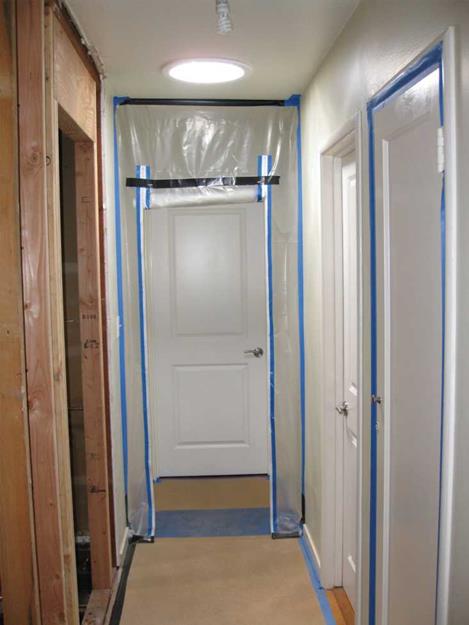New construction sometimes means removing old construction. Make sure your client is aware of possible air quality problems that can result from demolition. Some things to consider and discuss with the contractor and your client are:
• How will the demolition area be isolated from the rest of the home? (See Figure 3.11.)
• Will the heating or air conditioning system be blocked in the demolition area, so that dust and debris are not circulated throughout the home?
•
 |
 |
If the home was constructed before 1978, it is important to determine if there is any lead paint in the demolition area. Although lead paint was available until 1978, it was especially common
in homes built before 1950. Disturbing lead paint can cause serious air pollution and health effects, especially for young children.
• Asbestos is another hazard in houses built before the late 1970s. Disturbing asbestos-containing materials can create airborne health hazards. If asbestos is a possible hazard, special removal and disposal procedures by a trained contractor may be needed.
• Sometimes demolition uncovers things like dead animals and insects in walls, attics, and other spaces. This is part of the reason it is important to isolate the demolition area from the rest of the home.
• How will demolition waste be removed and disposed? Can any of the materials be recycled or salvaged? Is any of the waste considered hazardous, such as asbestos-containing materials or preservative-treated wood? Are local regulations for disposal of construction waste being followed?



